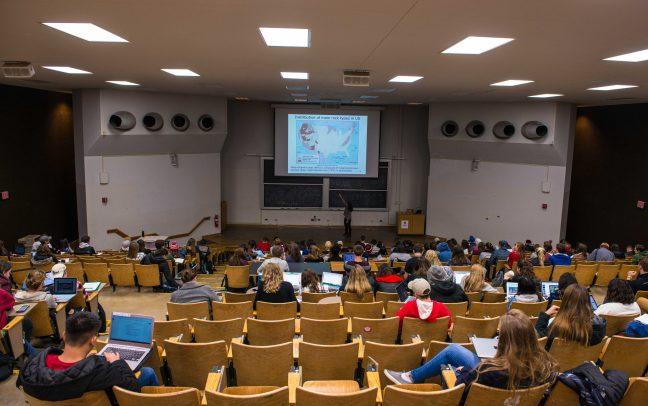Using too much technology would be a hindrance to learning. But, so is too little. How much is just right?
Normally more technology is better. After all, it’s the ability to make and use technology that has put humanity on top of the world. No other animal can tap a phone screen a few times and have food magically appear at the doorstep.
Technological advancement being always good is a common perception. In the past, it has also gone hand in hand with the advancement of knowledge, too.
Examples of technology making education easier and accessible are countless — imagine how illiterate the world would be without the invention of the printing press. Or even imagine taking notes with a clay tablet instead of a pencil. This is why in the present day, more people than ever are literate and know calculus — to varying degrees.
But when it comes to a classroom environment, an over-abundance of technology hinders how much students can learn. This only makes sense when one considers how learning works.
Learning is taking in information, understanding that information and then being able to apply those concepts. Imagine a child trying to learn how to tie their shoes — them watching someone else tie their shoes doesn’t mean they’ve learned how, and neither does memorizing the “bunny-ears method.” They’ve only learned it once they can do it themselves. Learning is the same process regardless of the person or situation.
In a classroom setting people taking notes covers the taking in information section, but not necessarily the other two. This is where technology can either aid our learning or sabotage it. The overuse of technology through typing all of the notes verbatim, copying and pasting slides, will certainly guarantee extremely detailed notes. Regardless, taking typed notes has been proven to be inferior to handwritten notes when it comes to retention.
Three studies, most famously “The Pen Is Mightier Than the Keyboard,” credited to Mueller and Oppenheimer show that while students who hand-wrote notes took less of them, “those who wrote out their notes by hand had a stronger conceptual understanding,” which translated to better test scores. Whereas those who typed notes had a lesser level of understanding as typing allowed them to “easily produce a written record of the lecture,” instead of being forced to understand what is being taught and write it in their own words.
The reason students who rely less on technology retain more information than those who rely heavily on it, is that they are making up for all the work that technology does on our behalf.
Consider a hypothetical real-world example. There are two students in an ECON 101 lecture — no else showed up because it was the day before Thanksgiving break — regardless the professor teaches anyway.
The professor talks too fast for the student to handwrite everything word for word. This forces that student to take in the information, break it down to the essentials, then dump it on the page — all the while intently listening. This requires intense focus for the entire lecture.
Comparatively, the other student using a laptop can have both the professor’s slides and a document open simultaneously. Most likely they’ll type what the professor says word for word and occasionally copy and paste all the graphs, equations, and what-not from the slides.
The difference in effort alone shows why those who take handwritten notes remember more — because they were trying to!
Although technology allows people to do more work in less time, it is not the amount of work put into learning that matters but the quality of that work. Notes help people learn the most when note-takers focus on summarizing what is being said in lecture — not copying it. This is easiest when you limit the amount of technology you use to the bare essentials. To answer the original question, whether there is an optimal amount of technology that can be used in the classroom, it depends on each individual.
Use the vast amount of technology to keep up, but not so much that you barely have to put any effort into taking those notes. Your columnist finds it best to take notes by hand while having the slides open on a laptop.
Harry Quick (hfquick@badgerherald.com) is a freshman majoring in economics.


